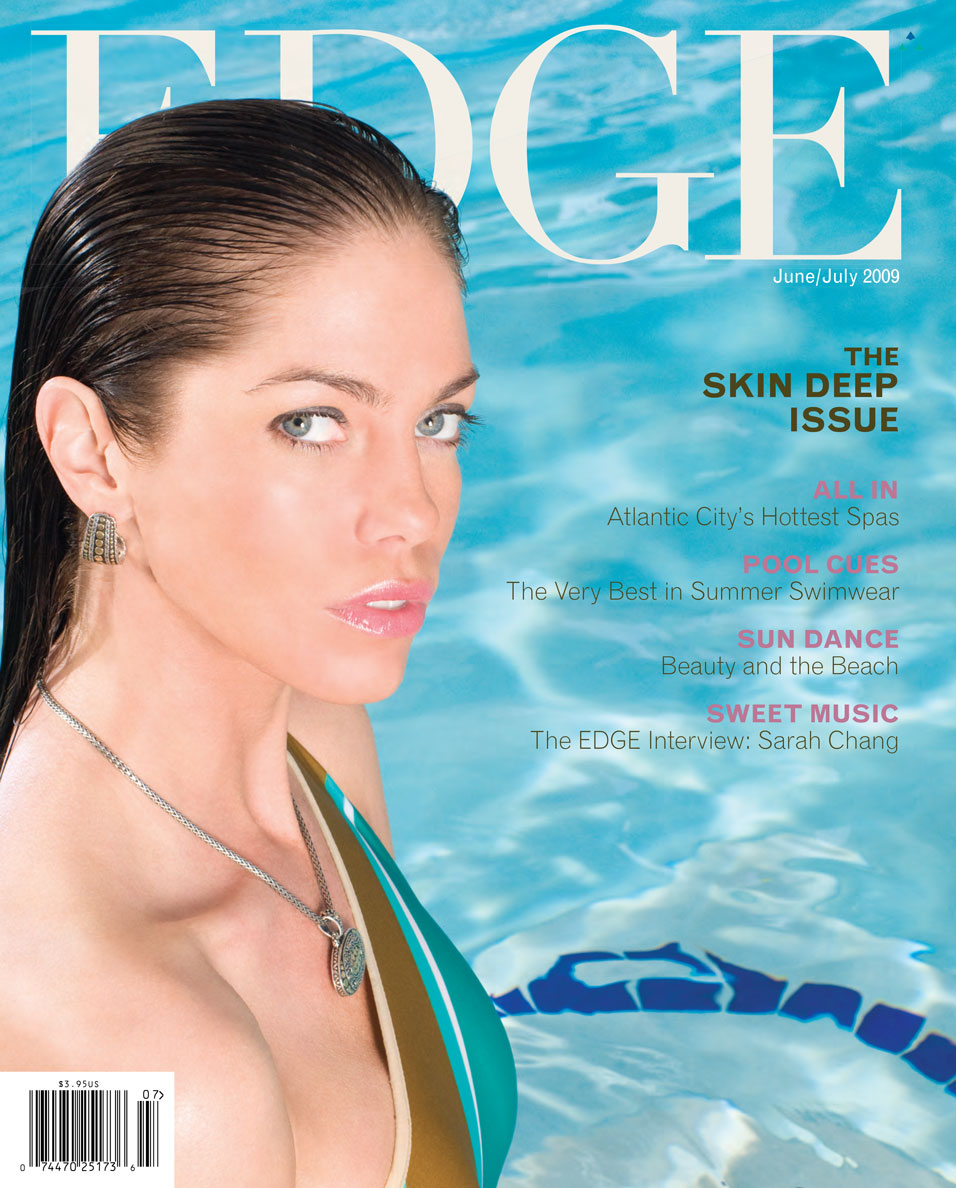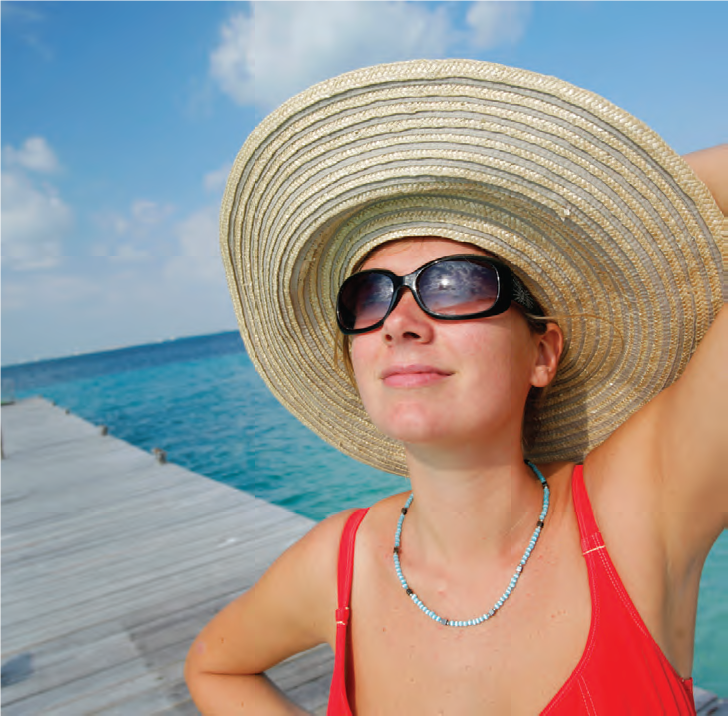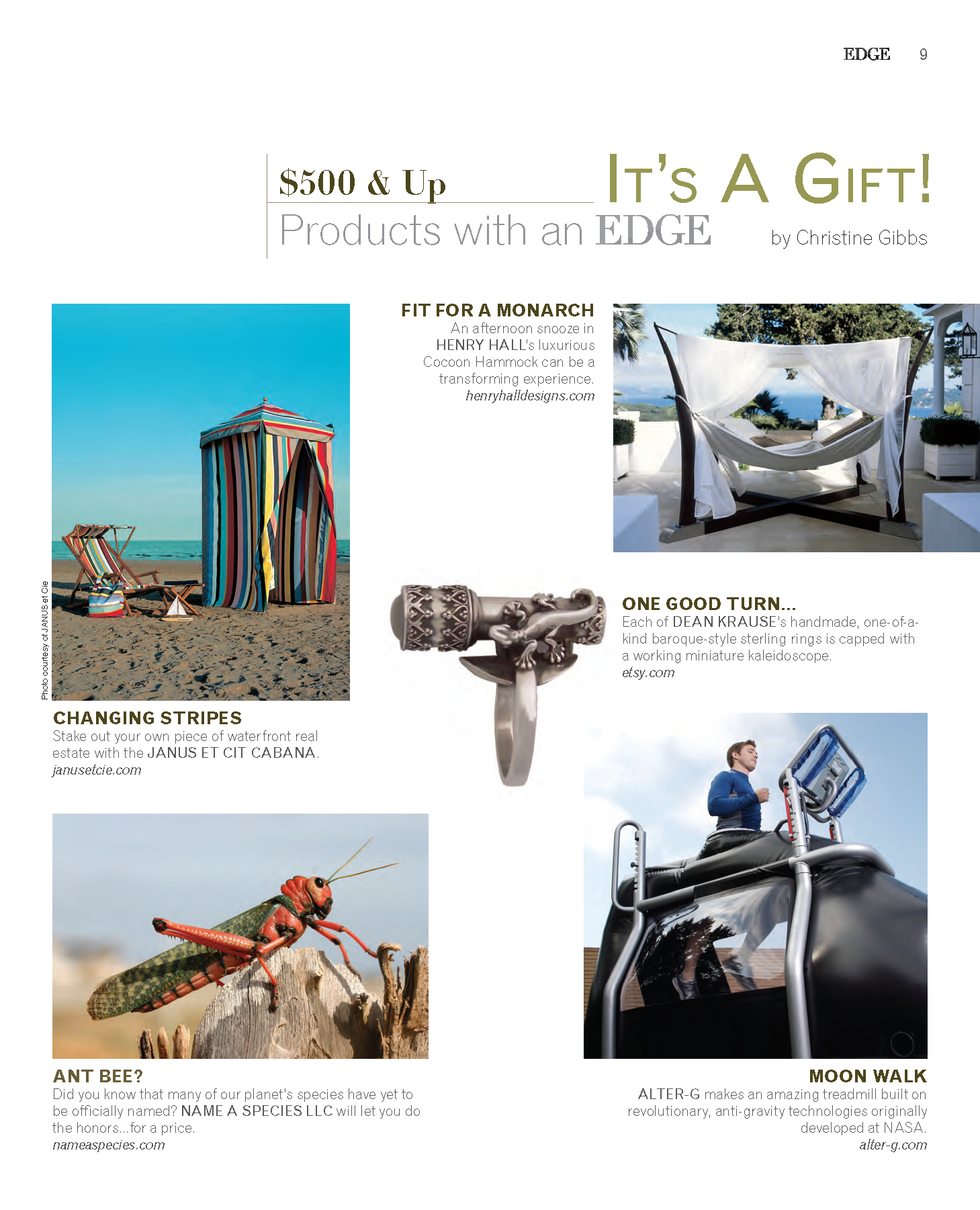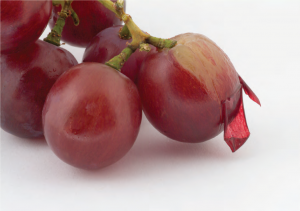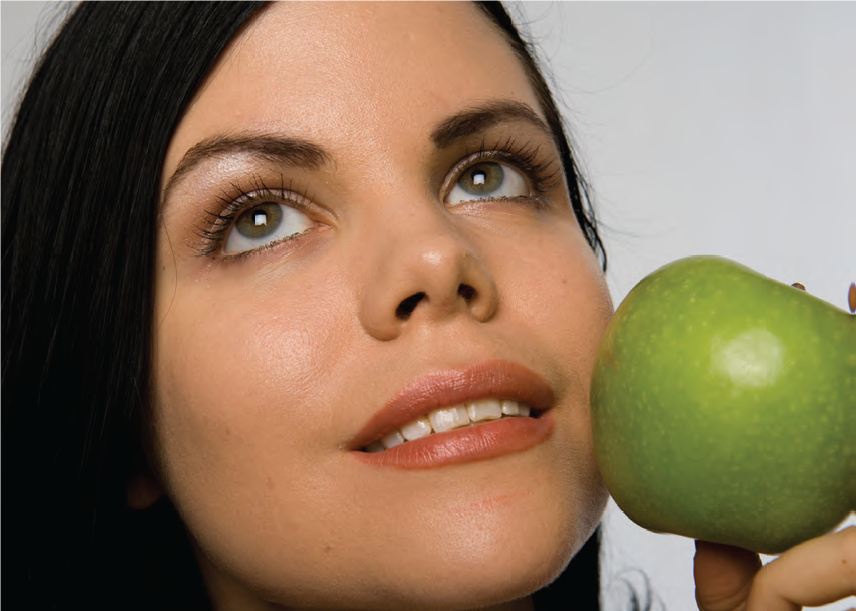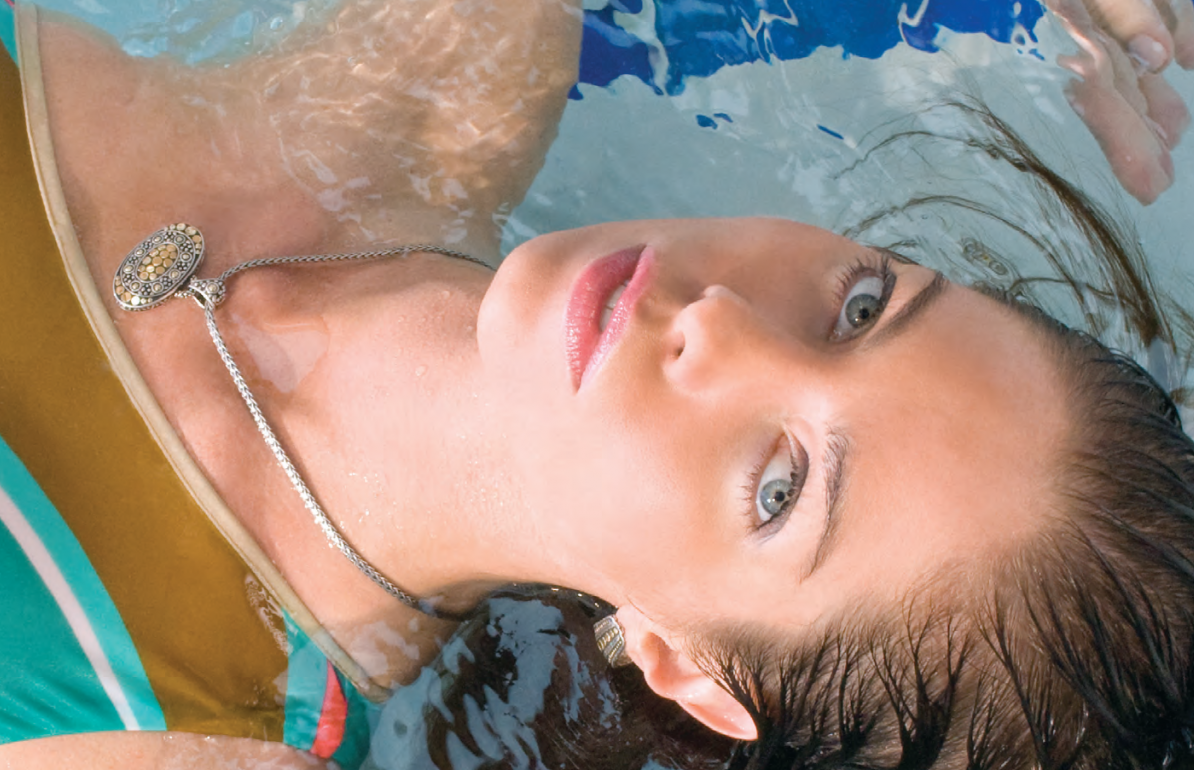Clean living. Prudent diet. Sunscreen savvy. All vital to healthy skin. And all easier said than done.
People spend billions of dollars a year on products that promise to make their skin firmer, fresher and younger. But doctors who focus on caring for the skin insist that the body’s largest organ needs more than over-the-counter potions to maintain its health and radiance—and to do what it was designed to do. “Skin is the protector of our body and the first line of defense,” says Dr. Kamran Khazaei, head of Nouvelle Confidence, the Center for Cosmetic Laser & Rejuvenation. “The first thing that’s affected when you come in contact with pollutants, bacteria and other toxins is the skin—that’s why you have to continually do maintenance on the skin, to allow it to work its best.” Everything we eat, breathe, and do affects our skin, and the results aren’t always pretty—especially when people neglect the basics of skin health.
Here’s how to ensure you protect the skin that protects you. SKIN RAVAGERS While genetics can play a role in how easily you burn or scar, whether you freckle and how soon you show signs of aging, experts say that lifestyle choices have the biggest impact on your skin’s health. Smoking, eating an unhealthy diet, exposure to pollutants and even a lack of sleep and exercise can cause premature aging and other skin problems. “Smoking and a poor diet absolutely damage the skin,” says Dr. Khazaei. “Any type of toxin in the body affects the whole body, including the skin.” But when it comes down to it, sun exposure continues to have the most punishing effects on a person’s skin. “The worst enemy of the skin is the sun,” says Dr. Khazaei. “Everyone thinks they look healthier by tanning themselves under the sun, but that’s the worst thing to do for skin health.” It’s hard to avoid news reports on the dangers of sun exposure, but surprisingly it hasn’t had a huge effect on people’s behavior.
Recent CDC studies have shown that 40 percent of adults don’t use sunscreen, and 70 percent of those who use sunscreen don’t bother to reapply when it’s recommended. It’s the ultraviolet radiation that causes most of the trouble—particularly UVA rays. “UV radiation is a known carcinogen, and is associated with both an increased risk of skin cancer and an increase in skin aging,” says Dr. Joseph Alkon, a plastic and reconstructive surgeon at Trinitas Regional Medical Center, who specializes in treating skin cancers. Unfortunately, many people have taken their desire for darker skin straight to a more dangerous spot—the tanning bed—where UVA rays are three times more potent than in natural sunlight. “There has been a rise in the number of people using tanning salons, including teens and younger patients,” says Dr. Alkon. “More than one million people use tanning salons on a typical day in this country—70 percent of whom are females in their late teens to late 20s.” Tanning bed use, he adds, may put you at even more risk of cancer and other damage.
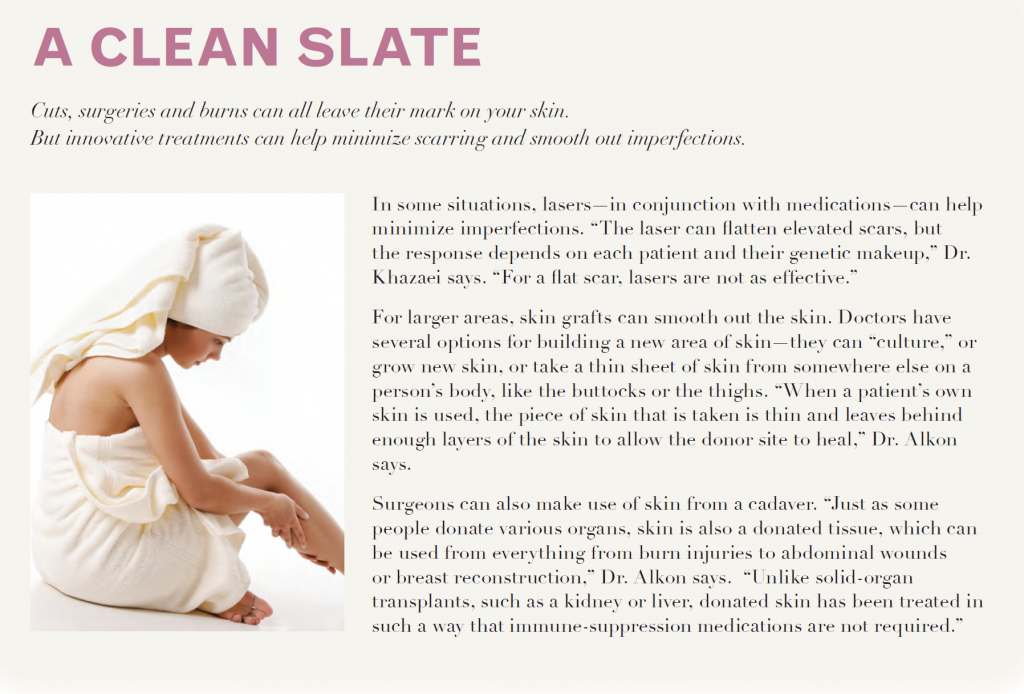
SAVING YOUR HIDE You may think you’re a lost cause after decades of sunscreen-free sunning at the shore, but there’s still plenty to be done to improve the health—and look—of your skin. Dr. Khazaei uses laser and microdermabrasion treatments to help combat the signs of skin damage. “Laser treatments help regenerate collagen formation to rejuvenate the skin, and can be used to treat freckles and age spots,” he says. “Microdermabrasion removes dead skin cells that are produced by the sun, exposing the younger, healthier skin beneath.” Customized skin care products—like Dr. Khazaei’s own line—can help clear away dead cells and revitalize the skin beneath. But the best protection is prevention—and that means stopping smoking, getting more sleep, eating better, and most importantly, using sunscreen regularly. “Even on a cloudy day, you need sunblock to protect the skin—the rays that cause the most damage can still pass through the clouds,” Dr. Khazaei warns. “If you take care of your skin, it naturally stays younger and lasts longer.”
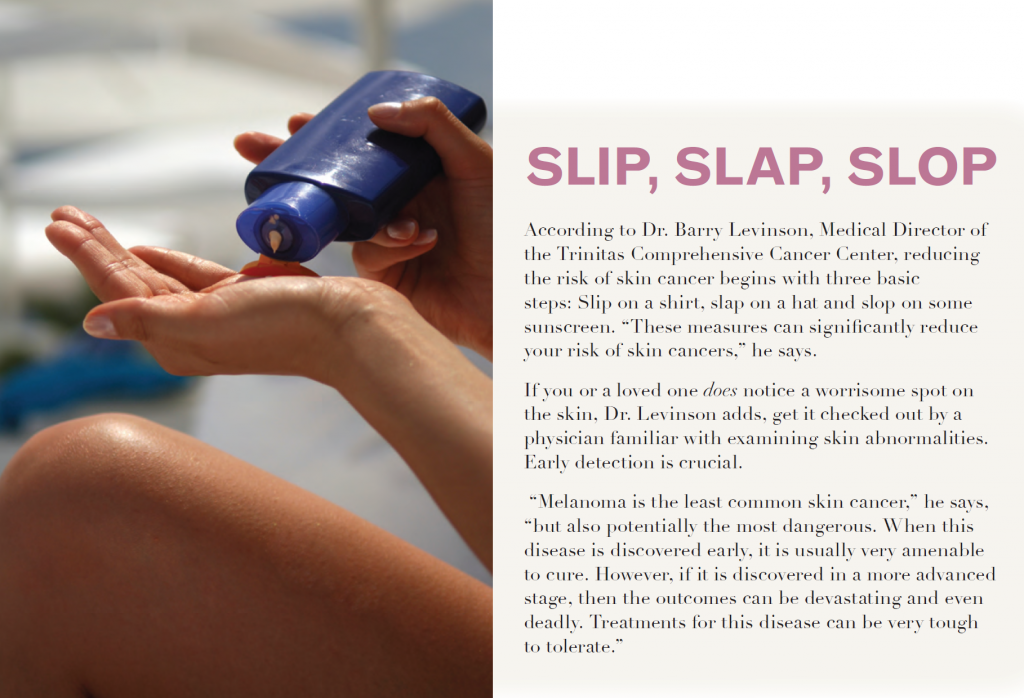
Editor’s Note: Lisa Milbrand is a New Jersey-based writer whose articles on health and relationships appear in Parents, Arthritis Today and Modern Bride. Her blog themamahood. com celebrates the life of a working mother.
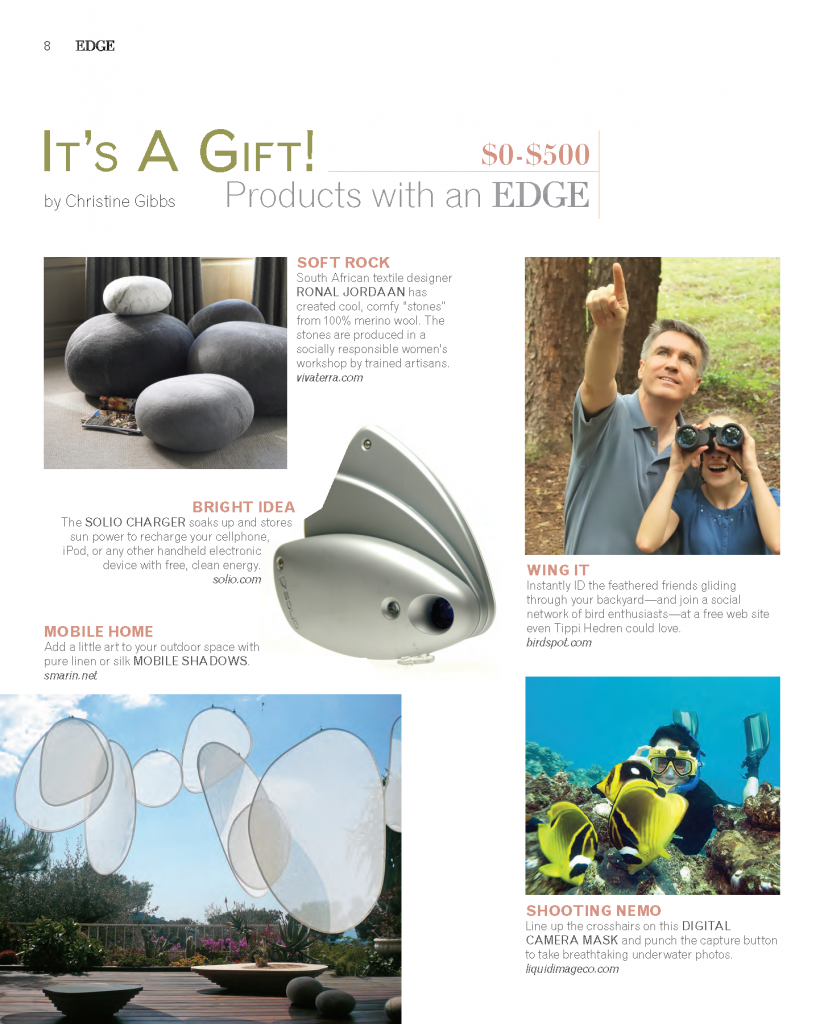

Turns out you can judge a wine by its color.
Although wines have myriad and complex properties, perhaps the most obvious can be attributed directly to the skins of their grapes. The basics of wine-making are well known…grapes are picked, then crushed, and the skins either stay in contact with the crush or have little to no contact. Wines can be grouped into three primary categories relative to the skin of the grape: white wines, red wines, and rosés wines.
WHITE WINES are wines that contain little or no red pigmentation. These wines have had little or no interaction with the skins of their grapes as they are processed. White wines are almost always made from white grapes, but they can be made from black grapes as well, because the juice of most black grapes is actually clear. White wines can be sweet or dry, or somewhere in between. Popular white wines include Chardonnay, Pinot Grigio, Pinot Gris, Riesling, and Sauvignon Blanc.
Blanc.
RED WINES are made from black grapes and have a red or blue tint. Since most grapes have colorless juice, red wine needs its grape skins, which contain nearly all of the grapes’ pigmentation, to remain intact along with the juice during all or part of the fermentation process. Tannins, also found in the grape skins, are transferred into the wine while the skins are in contact with the juice. Besides the difference in color, the primary difference between red and white wines has to do with their respective tannins.
Found mainly in red wines, tannins provide a dry, puckery sensation in the mouth and in the back of the throat. They also help preserve wine, allowing most (but not all) red wines to be aged longer than white wines. Popular red wines include Beaujolais, Cabernet Sauvignon, Chianti, Merlot, Pinot Noir and Zinfandel.
ROSÉ WINES are pinkish in color, so they are often referred to as pink or blush wines. Rosés are made from black grapes, but they do not fully turn red because the grape skins are removed from the juice mere hours after initial contact. This brief exposure to the skins gives the wine its signature color through the slight transference of red pigments. Rosés can also be produced by blending white and red wines. This technique also involves brief skin contact, which ensures that a minimal amount of tannins enters the blush wine. Many rosés are sweet, with White Merlot and White Zinfandel serving as typical examples.
The best and most traditional vintages, however, are the European rosés, which tend to be bone dry. Given today’s high-tech instant information resources, grape skin and its extracts have been getting a lot of attention in terms of potential health benefits. Antioxidants, called pycogenols, are present in grape skins. The darker the grapes, the greater concentration of pycogenols, hence the media’s infatuation with the healthful properties of red wine. In the 1950s, these compounds were isolated from grapes and used in the treatment of cirrohosis, varicose veins, and retinopathy (an eye disease attributed to diabetes). As scientific discovery progressed, the researchers were able to isolate reservatrol, the most hyped compound on the market associated with grape skins. Studies have shown reservatrol’s benefits to include: • High potency anti-inflamatory properties • Blood thinning capabilities as good or better than aspirin • May interfere with the development of cancer • Natural anti-fungal agent • Helps to reduce bad cholesterol (LDL) • Can increase good cholesterol (HDL) • Reduces blood pressure.
Now before we all go out and drink massive quantities of red wine to saturate ourselves with reserves of reservatrol, there are some offsetting side effects. In order to enjoy most of reservatrol’s positive health benefits through red wine consumption, we would have to drink red wine practically all day long, every day. Perhaps not a bad idea to some, but our livers would undoubtedly have something to say about this. A further, consideration is that reservatrol is a plant estrogen, which has received much attention as contributing to the proliferation of certain breast cancer cells. Grapes, once an innocent treat we all enjoyed as youngsters, now provide us as grown-ups with the fruit of the vine in its fi nest form—wine, complete with all its trappings, some good, some bad. We can now appreciate that wine is more than just grapes and their juices. It’s got some real skin, too.
Mike Cohen owns the Wine Concierge (www.gourmetwc. com). He specializes in locating hard-to-find wines for customers in New York and New Jersey.
What’s Cooking This Summer? Hopefully Not YOU!
When it comes to summertime beauty, looking good is a whole different ballgame. While winter hues tend to accentuate the delicacies of one’s skin tone, hair and eye color, the warmer months are all about bright bursts of color against a healthy, sun-kissed palette. Of course, getting that sunny summery look often means increased UV exposure. Preventing skin damage during
the sultry summer months requires careful attention to protection, hydration, and (of course) daily product application. First rule of thumb—you don’t have to hit the beach to grab a perfect tan. TERRACOTTA SUNLESS BALM by Guerlain ($50/5.7 oz) is enriched with 100% natural Moroccan argan oil, so it hydrates, protects, and even helps to regenerate the skin for a smooth, flawless finish. Mimicking the effects of a deeply hydrating body butter treatment, this rich formula is ideal for quenching sun- and wind-parched dry skin. A subtle iridescence also gives your skin a natural glow for several days after the first application. Most importantly, Terracotta will leave your skin looking naturally tan, not orange or streaked. It’s quality luxury and, most importantly, it’s safe.
If you do plan to tan the natural way, you absolutely must protect your skin before leaving the house. Given the impact of a diminished ozone layer, you just can’t be too careful. And just because you don’t feel as if you’re baking in the high-noon sun doesn’t mean you aren’t burning. Doctors recommend wearing at least an SPF 15 at all times and these days it’s easy to find a light, smooth moisturizer with built-in UV protection (without breaking the bank). I highly recommend RoC RETINOL CORREXION DEEP WRINKLE DAILY MOISTURIZER SPF 15. This wonder product is a huge favorite among skin care gurus. Don’t let the name scare you off! This moisturizer helps to visibly reduce expression lines and wrinkles while protecting your skin from the sun’s harmful rays. Enriched with Vitamin E and SPF 15 sunscreens, it also helps prevent the signs of premature aging.
It does contain Retinol, however, which can be a challenge. In fact, it’s recommended that the user test the product for two weeks while building up the dosage gradually. The buzz on this product is incredible. Although it’s relatively new to the market, it’s being touted as a miracle cream inasmuch as it’s hypoallergenic, non-comedogenic (won’t clog pores), oil free, and amazingly inexpensive (only $18.00/oz.). And since a good base cream won’t send you into foreclosure, ladies, I say splurge on your lips! CHANEL’S AQUALUMIERE SHEER COLOUR LIPSHINE is super light for those hot, balmy nights and also packs an SPF 15. Even at $30.00 a tube, don’t waste time shopping around. Survey says “Monte- Carlo” will be this summer’s hottest shade, so grab it while you can!
For the fellas, don’t be swayed by what your buddies tell you! Harsh sun, salt-water, and chlorine hold as many dangers for your skin and hair as they do for the ladies. Unless you want to end up looking like George Hamilton, here are some tips for summer maintenance. First of all, shaving is key. The ART OF SHAVING’S LEMON ESSENTIAL OIL ($22/5 oz.) is the perfect shave cream for summer. Rich with glycerin, coconut and other essential oils, it leaves your skin smooth 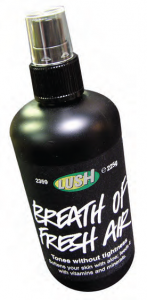 and moisturized. But, once you’ve got a stubble-free, clean canvas of a face…what to do? This is where great unisex skincare comes in. What’s a beauty regimen without the quintessential summer face soap? Origins A PERFECT WORLD DEEP CLEANSER WITH WHITE TEA (5 fl . oz./150 ml) might sound like an afternoon drink, but as soaps go, it’s life changing. This perfect foaming face wash is formulated with nature’s rare Silver Tipped White Tea. In a preemptive sweep, dirt-grabbing minerals combined with the gentle, skin-compatible cleansing action of palm and coconut oils plus oat amino acid reach deep to help detoxify and free skin of harmful, free radical-releasing impurities before they settle down and cause skin-aging oxidation, dehydration, and irritation.
and moisturized. But, once you’ve got a stubble-free, clean canvas of a face…what to do? This is where great unisex skincare comes in. What’s a beauty regimen without the quintessential summer face soap? Origins A PERFECT WORLD DEEP CLEANSER WITH WHITE TEA (5 fl . oz./150 ml) might sound like an afternoon drink, but as soaps go, it’s life changing. This perfect foaming face wash is formulated with nature’s rare Silver Tipped White Tea. In a preemptive sweep, dirt-grabbing minerals combined with the gentle, skin-compatible cleansing action of palm and coconut oils plus oat amino acid reach deep to help detoxify and free skin of harmful, free radical-releasing impurities before they settle down and cause skin-aging oxidation, dehydration, and irritation.
Now that your face is smooth and clean, there’s just one more step. Toner is essential for healthy skin in warm weather climate. Lately, vegan products have become all the rage. long last, I believe a non-chemical toner has finally been perfected. LUSH BREATH OF FRESH AIR TONER ($17.45/8.4 fl . oz.) is pretty much as naturally perfect as it gets. It rehydrates dry skin with soothing, nutritious ingredients like real sea water (fetched from deep in the Pacific), natural spring water, aloe vera gel, patchouli oil, rosemary oil, and seaweed absolute. Just a spritz softens and balances, while it refreshes and renews. Everybody needs a little extra help when it comes to maintaining a fresh face when the heat is on. So follow these tips, be prudent, and enjoy a skin-tillating summer.
Editor’s Note: Dan Brickley was the host of TLC’s A Makeover Story for three seasons. He has authored numerous articles on fashion and beauty.
As 20th Anniversaries go, Sarah Chang’s is one of the more remarkable. She has been captivating audience since age 8, mastering some of the most challenging violin concertos with awe-inspiring passion and precision when her peers were still proud of how well they tied their shoes. Now 28, Chang’s résumé is pages long when others her age are just getting their career-defining breaks. She has enchanted audiences from Carnegie Hall to the Kennedy Center to the great concert halls of Europe and Asia. She has shared the stage with fellow luminaries from Pinchas Zukerman to Yo-Yo Ma. Chang’s CDs are best-sellers. She has even carried the Olympic torch. EDGE sent ZACK BURGESS on assignment to profile Sarah Chang. His job was to peel away the layers that typically accompany international stardom and acclaim, and get to the heart of this transplanted Jersey Girl. Sarah made it easy. Her poised and stunning facade notwithstanding, she is still a kid at heart.
EDGE: Every parent of a talented daughter dreams that their child will have the life that you do. So let’s get the obvious question out of the way. Do you ever yearn to be someone other than yourself, to slip out of your skin and into someone else’s?
SC: Maybe for a day, but not any longer than that. I love my life. I have been traveling all over the world since I was a 10-year-old. I’m 28 and have seen and done things that are just unimaginable.
EDGE: When did you request your first violin?
SC: At four. My father played the violin and I wanted to be like him—I’m a daddy’s girl, like most little girls. I was playing the piano at the time and thought it would be great to play something else. Besides, I wanted something to carry around.
EDGE: At what point did you realize that your life was going to be different?
SC: I performed with the New York Symphony Orchestra when I was only eight. I knew there was something that wasn’t normal about that. But I didn’t think I had a “gift.”
EDGE: As an adult, have you ever experienced the fearlessness you did back then?
SC: No. I was a kid. I just did it! I didn’t think about it. Of course, now, I’ve been doing it forever and this is my life, but back then I just went with it, like most kids do.
EDGE: What was it like working with older musicians?
SC: Everyone would be going to parties after a performance and here I had to go back to my room or go study. It was frustrating then but, hey, I was a kid, a teenager. Nothing is fair when you’re that age.
EDGE: So today, as a 28-year-old, what is the downside of being Sarah Chang?
SC: The travel. Sometimes I wake up and don’t know where I am, or what city I’m in. But then I remind myself of what I do, and how I get to entertain people all over the world— and that, at an age when others are just breaking into this business, I have been doing this for twenty years now. I’m already booked out to 2012, which is a great “problem” to have when you’re an artist.
EDGE: What’s your greatest obstacle as an artist?
SC: Having to be good every night, even on those days when I don’t feel well. It’s what the public expects from me and, realistically, it’s what I expect from myself.
EDGE: Which can get rather difficult.
SC: Because I’m human.
EDGE: Does it all seem surreal sometimes?
SC: Sometimes. But for the most part I’m used to it. I don’t go through this wow syndrome, where I have to pinch myself. I’ve been doing it for so long. I’m a professional. You know what I mean?
EDGE: How does dating work when you’re Sarah Chang?
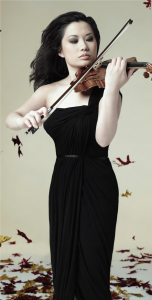 SC: It’s a challenge as a young woman on tour. It’s really hard to have a personal life when one person is in one place and the other is somewhere else. I would like to settle down someday, but I would also like to be a committed mother and wife when that happens.
SC: It’s a challenge as a young woman on tour. It’s really hard to have a personal life when one person is in one place and the other is somewhere else. I would like to settle down someday, but I would also like to be a committed mother and wife when that happens.
EDGE: When were you finally on your own?
SC: My parents stopped traveling with me when I was around 18 or 19—which presented a challenge because they were no longer there to protect me. I made my fair share of mistakes. But I’m having fun at this point in my life.
EDGE: What was life like before that, as a 13- or 14-yearold?
SC: I was just like any other teenager who thought the world owed me something. In retrospect it was no big deal. You know, here I am performing one minute and doing homework by fax for Germantown Friends and Juilliard the next. I was always struck by how much younger I was than everyone else, and that bothered me. I missed a lot of parties. But now that I’m older, in retrospect it really was no big deal.
EDGE: What do you do on days when you’re not performing?
SC: I’m just like everybody else. I’m human. I have everyday highs and lows just like everyone else. I would say I just like to have a day to myself. No cell phones, no Blackberrys, no emails. But that rarely happens. I probably wouldn’t know what to do if it did.
EDGE: Is there anything you miss about being a Jersey Girl?
SC: Of course. I miss the driving—and the space. I’m a terrible driver, so I could really use the space!
Photos courtesy of Sheila Rock/Opus 3 Artists

While the skincare industry touts its latest, greatest miracle-working scientific formulations, actual science increasingly links healthy skin to what you put IN your body, not ON it.
Skin is the largest organ of the body. It’s the only one that is instantly visible. And it is vulnerable to all sorts of attacks, including dryness, excess oil, wrinkles, sunburn, acne, dermatitis, rosacea, eczema, psoriasis, seborrhea, and various forms of cancer. Millions of consumers shell out billions of dollars on topical skincare products each year in an effort to improve the look and feel of their skin. All the while, they may be missing a more obvious, cheaper, and better way to reach their goal. Food.
In their book Beauty Basics for Teens, Dianne York-Goldman and Mitchel P. Goldman, M.D., urge a balanced diet that includes carbohydrates, protein, nutrients and fiber, but is low in saturated fats and empty calories. They also advise drinking at least eight 8-ounce glasses of water each day for proper hydration. The goal is to eat foods rich in vitamins, minerals, antioxidants, and healthy fats. Melody L. Meyer of Albert’s Organics, a California-based natural products distributor, suggests leafy green vegetables for iron and calcium, sweet juicy fruits (especially at breakfast), a variety of whole grains, and easy-to-digest proteins like legume soups, paneer (cheese made from boiling milk, adding lemon and straining solids), and lassi (diluted yogurt and spice drinks).
Carotenoids, which are found in red and orange fruits as well as in yellow and dark green vegetables, are recommended by Sharrann Simmons of Cognis Nutrition & Health, an Illinois-based food technology company. She says that carotenoid lutein has been shown to protect skin against UV-damage, improve skin hydration, encourage elasticity and enhance beneficial lipid levels. For its “Beauty from Within” campaign, DSM Functional Food Marketing of New Jersey also enlists carotenoids, as well as antioxidant vitamins C and E, green tea extracts, omega-3 fatty acids (which can be found in fish and flaxseed), and polyphenols (derived from olives). Consumers seem to be getting the message. A recent study by the Mintel Group, a market research fi rm, notes that 2008 saw the debut of more than twice as many new beauty foods and beverage products as there were in 2007.
Dermatologist and author Nicholas Perricone urges a diet loaded with these essential proteins: fish, poultry and, occasionally, lean beef, pork or ham. He also suggests consumption of soy foods like tofu and tempeh, egg whites, low-fat cottage cheese, low-fat milk, and yogurt. For carbs, he favors squash, spinach, onions, green beans, asparagus, cabbage, cauliflower, eggplant, collard greens, escarole, green peppers, strawberries, raspberries, apples, blackberries, blueberries, cantaloupe, honeydew, and kiwi. Recommended fats include oils derived from olives, walnuts, safflower, soybeans, rapeseed (canola), and sunflowers, as well as nut butters and avocado.
Perricone also is high on the following ten “Superfoods”: Aτai (pronounced ah-sigh-ee), a high-energy berry that grows in the Amazon The allium family of foods, including garlic, onions, leeks, scallions, shallots, and chives, all of which are rich in flavonoids. Barley, which is not only low on the Glycemic Index, but high in both soluble and insoluble fiber. Green foods, which are derived from cereal grasses and blue-green algae. Buckwheat, also low on the glycemic scale, and which may be substituted for less healthful grains like rice, wheat, and corn. Beans and lentils, an alternative to fattier meat proteins. Hot peppers, which are high in heart-healthy, anti-inflammatory compounds. Nuts and seeds, which are a source of good fats. Sprouts for their enzyme content.
Yogurt and kefir, fermented dairy products that add digestion-aiding probiotics to the diet. J.T. Ryan is a licensed physical therapist and owner of Healing Touch in Howell. The company makes and markets handmade natural body-care products. She emphasizes the need for trace minerals and electrolytes, which she calls “a key to cellular regeneration.” For example, Ryan says, a deficiency in copper will lead to scar formation during the skin’s 40-day cycle period. Foods rich in copper include most nuts (especially Brazils and cashews), seeds (especially poppy and sunflower), chickpeas, liver and oysters. Are there foods that should be shunned if your goal is shiny, smooth skin? Most definitely. This is particularly true if you are worried about acne. Naturopath Alan C. Logan, who teamed with dermatologist Valori Treloar on the 2007 book The Clear Skin Diet, cautions against the foods most popular with American teenagers—pizza, hamburgers, cookies, crackers, fried potatoes, salty snacks and sweetened beverages.
Even milk consumption is “strongly associated with acne,” the authors claim. In place of these no-no’s, Logan argues for a diet that focuses on the omega-3 fatty acid eicosapentaenoic acid (EPA), found in fish like mackerel, sardines and salmon, tomato extract with the carotenoid lycopene, marine fish that are rich in collagen, and a high-flavanol cocoa extract. Logan explains that inflammation is at the core of acne, and that oxidative stress, a byproduct of the standard American diet, “fans the flames of inflammation.” Fish oil, he says, especially EPA, blocks the production of the inflammatory chemicals. This also is why antioxidant fruits and vegetables are so important. Does this mean you have to toss away all your lotions, creams and ointments? Of course not. They definitely serve a purpose. But keep in mind that if you really want a smooth, healthy complexion, a good nutritional foundation is where you should start.
Editor’s Note: New Jersey-based freelance writer Alan Richman is the former editor of Whole Foods Magazine.
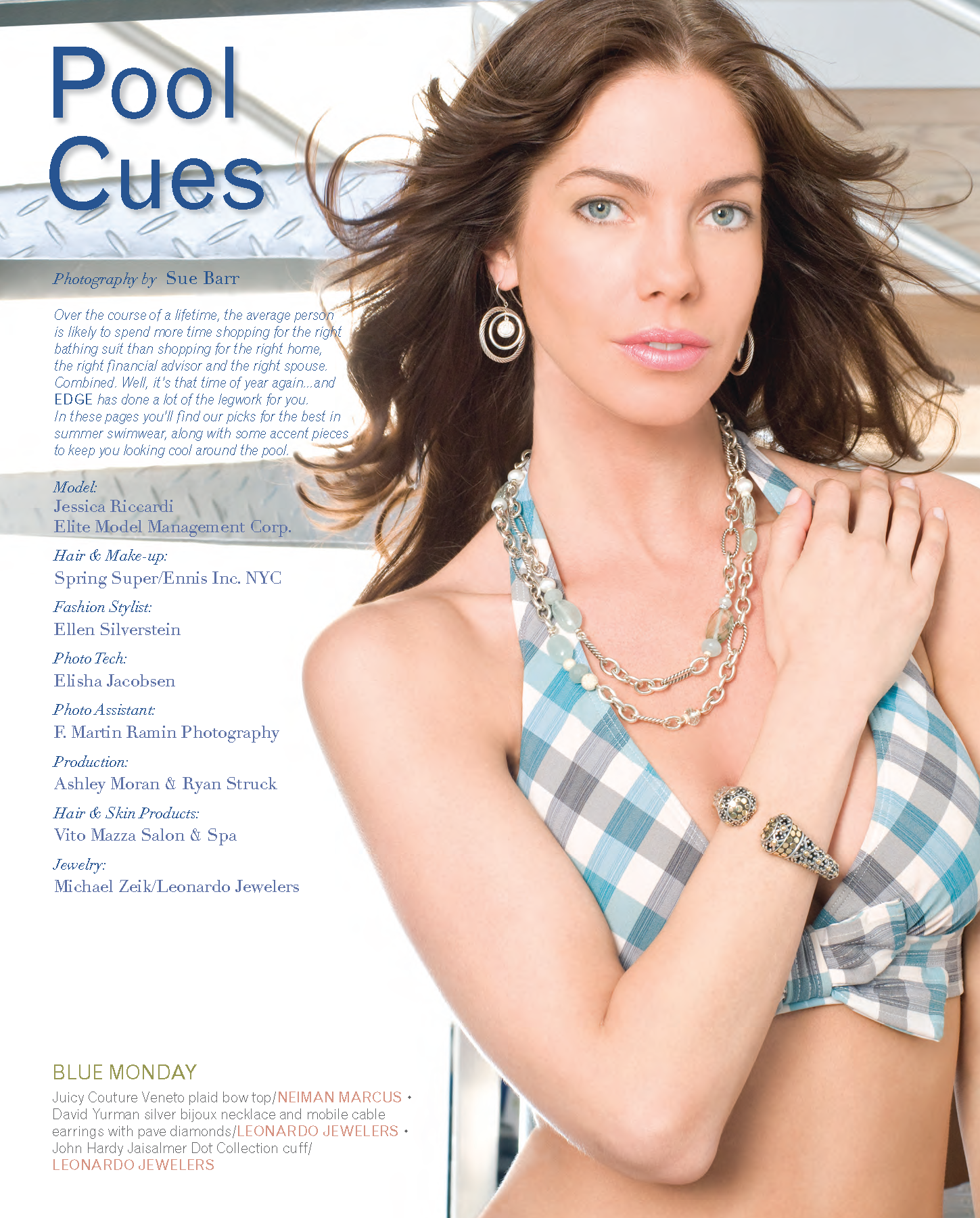

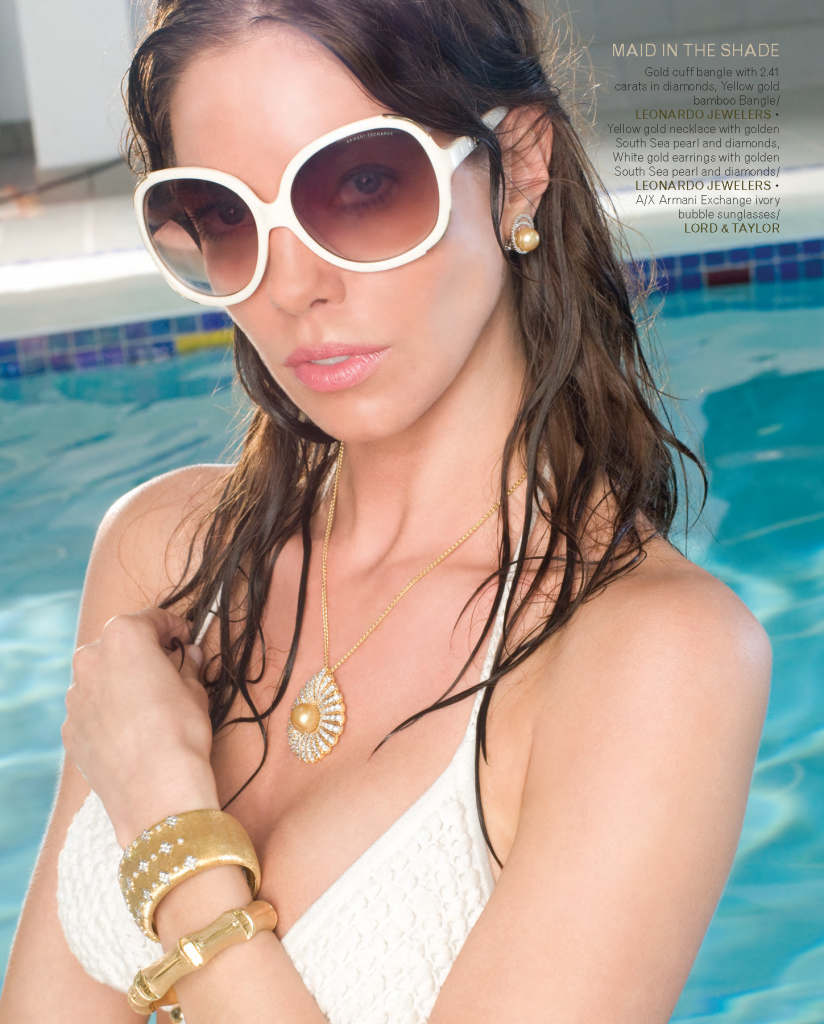
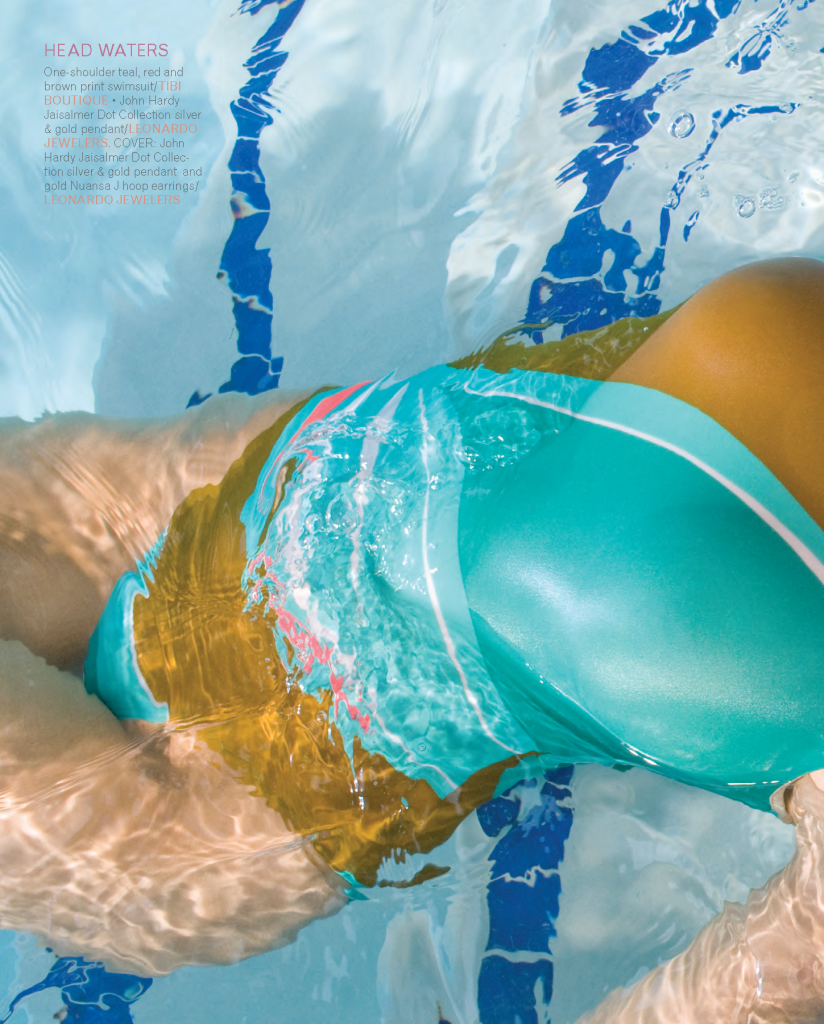
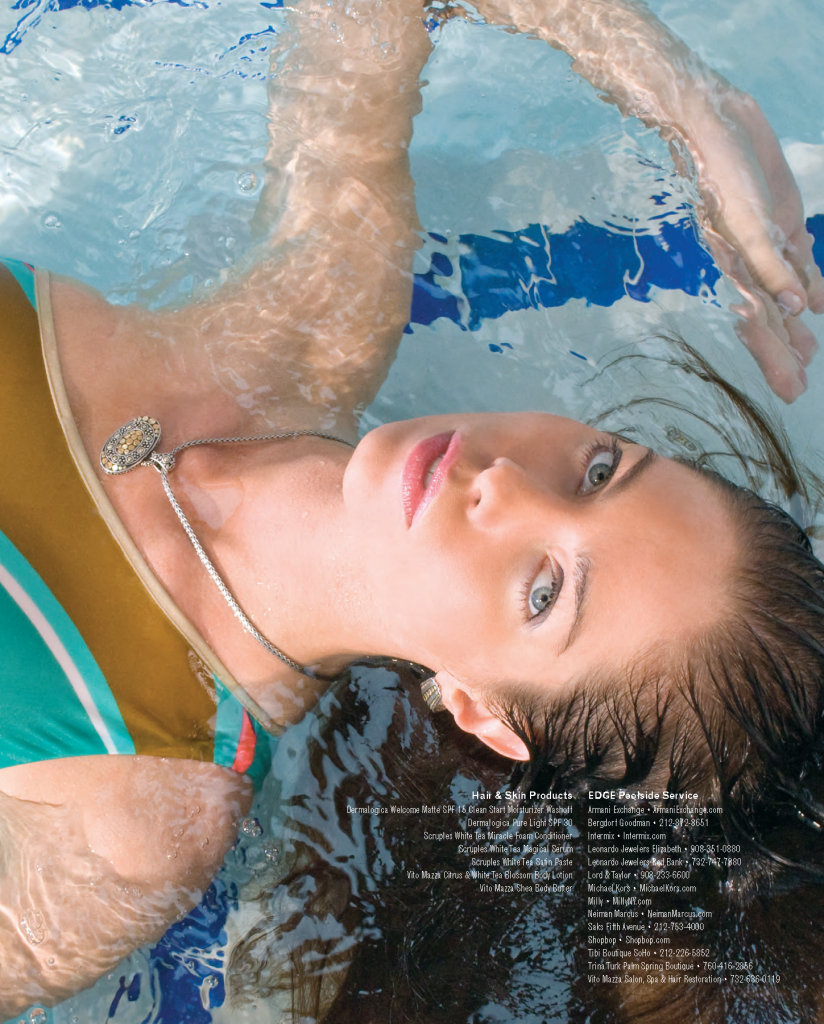
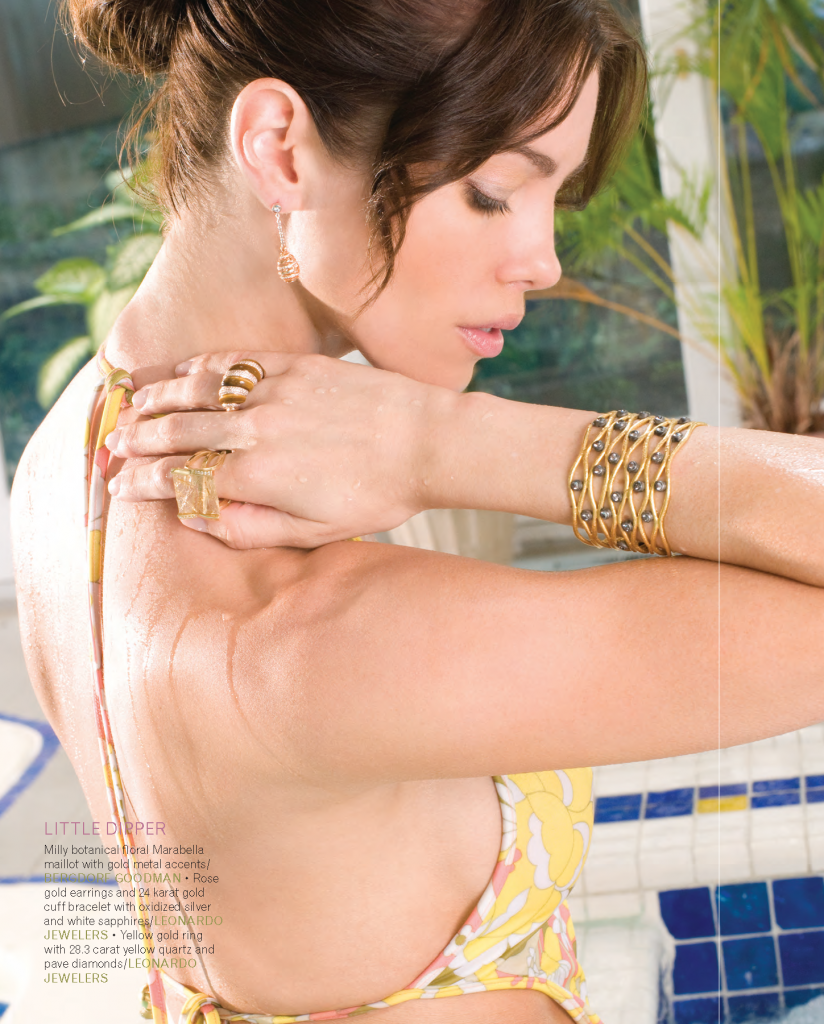
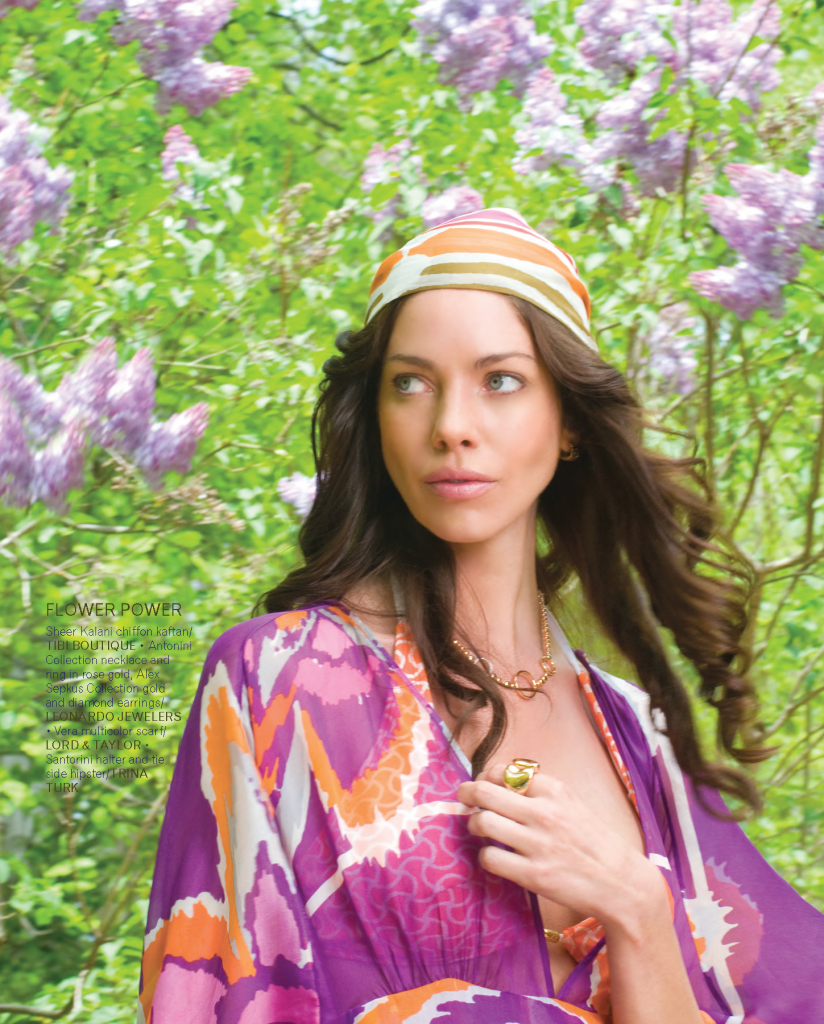
The eggs, scrambled with cream, cooked with patience over low, slow heat, are folded with strands of scallions and set, with a ripple of sharp parmesan, over toasts. They’re an appetizer on this easygoing weeknight at A Toute Heure in Cranford—the mark of a sure-footed kitchen confident enough to start off a dinner with the most basic of ingredients.
A Toute Heure, two years old this month, is the domain of chef-owner Andrea Carbine, who set up shop in this homey corner building with the idea of creating an American version of a bistro. That is to say, she and chef de cuisine Kara Decker fashion a daily-changing menu of regionally sourced foods prepared without fuss or frills, like those simple, yet perfect eggs. They serve it all without pretense in a warm, wood-accented room that defines cozy.
They cater to a local clientele, most of whom drop in, toting bottles of wine, for whatever is on tap that night—be it a silky house-made liver pate, or pork-and-veal meatballs strewn with caramelized onions and served with curry-charged ketchup, or a pile of hush-puppies given a shot of energizing heat by pickled jalapenos. Those locals know to gird themselves for weekend nights, when the no-reservation policy (save for parties of six or more) can make for long waits on the deck. Yet there’s a camaraderie on that deck—some sharing of wines, some reminiscences of A Toute Heure dinners past – that makes it a pleasantly communal experience:
Do you think there’ll be enough chocolate pot pie to go around tonight? Have you tried a red Rhone blend with the brined chicken? Inside, the big-ticket decoration in the low-lit dining room is a double-wide blackboard chalked full with names of the farmers, cheesemakers and other purveyors who provide the ingredients that fuel A Toute Heure’s kitchen. Starting about now, with rhubarb and peas and berries, crops from Carbine’s own garden in Cranford will take hold of the menu and, come high summer, just about take it over. It’s micro-seasonal, deliberately so, and yet there’s a soul to the food here that gives it year-round continuity and comforting familiarity.
It’s about, after all, those eggs, that fundamental liver pate and, perhaps, a puff pastry tart filled with an earthy chop of long-cooked wild mushrooms, onions and a film of fontina that unites the starter. You also can kick things off by nibbling on a short selection of small bites, such as the spirited meatballs or, my favorite, cippolino onions densely glazed with balsamic vinegar and sprinkled with sharp, yet creamy blue cheese. It’s a terrific combination and it makes you think about what you can do at home with a little vinegar, onions and a few flecks of cheese. I’m still thinking about what I can do with my next catch of mussels, thanks to A Toute Heure’s humble-goes-haute rendition swathing Prince Edward Island mussels in a velvety saffron cream sauce, then boosting the spice quotient with crumbles of chorizo.
The skinny Belgian-style fries on the side, served with a petite pot of garlicky aioli, makes it better than a trip to Brussels. Halibut poached in olive oil and plated with parmes and stoked mashed potatoes, sautéed spinach and a splay of preserved lemon advances A Toute Heure’s simple-is-right theme. So do the seared New Jersey sea scallops. Their crackling crusts yield to super-sweet meat and, quickly, find smart plate mates in a tart-crunchy apple-fennel salad and a cider vinegar-infused beurre blanc. The pot pie is the I-want-whatever-that-is dish at A Toute Heure. It won’t matter to you what’s inside when you see it come out of the kitchen. You’re going to jones for that beehive of a puff pastry top covering a pottery crock and won’t much care if it’s concealing beef or chicken or just vegetables.
On this night, it’s buttery braised beef and a passel of root vegetables cloaked in a red wine-enriched gravy that demands a soup spoon. Yet it always comes down to a roasted chicken in a bistro, and if a bistro can’t do a roasted chicken right, it’s got no business calling itself a bistro. This brined, bone-in bird is high on interior juice, with a drizzle of garlic-licked oil moistening the crisped skin. I’d gobble it down, straight, any old night of the week, even without the aid of the accompanying toasty fingerling potatoes and plump stew of portobellos. I’d also gobble down a bowl of the vanilla-spiked whipped cream in record eating-contest time, though I’d be foolish to miss the lemon verbena bread pudding it tops. What a great idea, I think to myself, as I hog this dessert. A gentle, lyrical herb giving style and substance to the chunks of bread and swirl of custard that make up a typical bread pudding.
You don’t need hard smacks of accenting flavor, just a subtle touch of something provocative. Save the punches for the chocolate pot pie, which is – happily – all about over-the-top ganache cut by slivers of pear and a balancing squirt of rum. The apple-toffee cake is the choice for a super-sweet tooth, built on a foundation of wines apples and capped by creamy toffee. Get it with one of A Toute Heure’s homemade ice creams – say, the sweet cream or the ricotta with candied citrus. Once cosseted inside A Toute Heure, you’ll get what it’s about: comforting, yet not clichéd, food prepared with technical precision, respect for the seasons and resolutely in tune with stewards of the land and sea. It’s food you’ll want to eat any day, any time. Andrea Clurfeld is a former editor of Zagat New Jersey.


